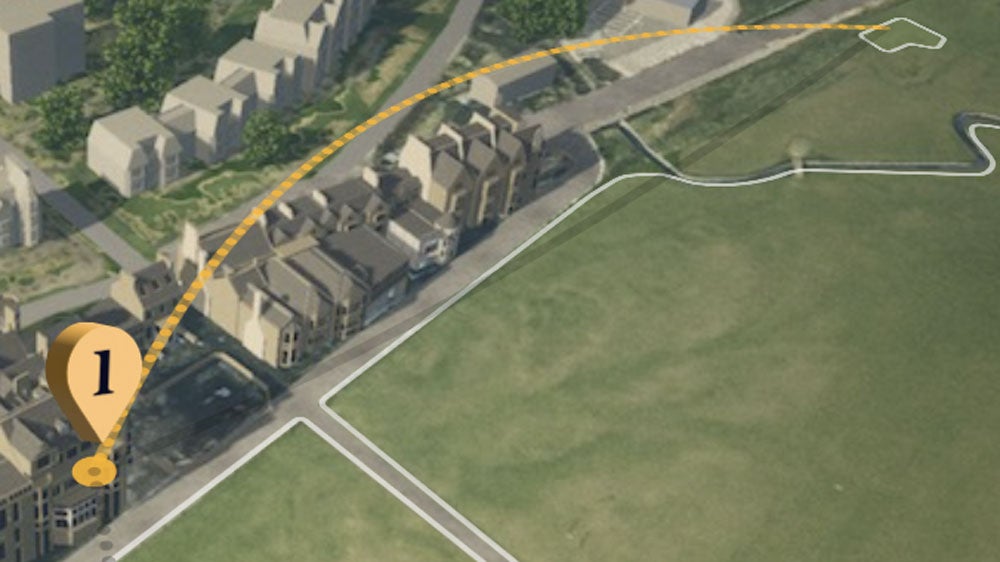GOLF’s Top 100 course panelists are among the most respected and well-traveled course evaluators in the game. They’re also keen to share their opinions. In this GOLF.com series, we’ll unlock their unvarnished views on all questions course-related. The goal is not only to entertain you but also to give you a better understanding of how to understand and appreciate golf course architecture. You can see GOLF’s latest Top 100 Courses in the World ranking here, and meet all of our Top 100 panelists here.
What is the most underappreciated feature of golf-course design and why? And what’s an example of a course where this feature is put to especially fine use?
David McLay-Kidd (panelist since 2004; has played 60-plus of the World Top 100): Golf at its best is an exploration of a landscape. If everything is seen at first glance, then there is no adventure, no exploration, no mystery, no intrigue. The best golf courses offer that exploration — most golfers are likely unaware of the journey a great course takes them on. The skill to weave that path through a landscape is an underappreciated feature of golf design.
The best course layouts wander somewhat unpredictably across the landscape. My favorite layouts include Kingsbarns, Swinley Forest and Royal Melbourne. Another subtlety of golf design is the use of light in design. Every golf course architect I know loves to play with shadows. Low light can cast long shadows over the most subtle features while a midday sun can still throw shadow on a deep north-faced bunker. These shadows are key to the visual appreciation of a golf course. Think of all the photos you’ve seen of the fairways at St. Andrews on a late summer evening. Without the shadows it’s a different look altogether.
Course Rater Confidential: What would scratch and bogey golfers shoot in tournament conditions at Augusta?By: Top 100 Panelists
Steve Lapper (panelist since 2009; has played 84 of the Top 100): Smart routing is the least-noticed by the large majority of golfers, and often the most critical task for a golf architect: How to find the best holes, best green sites, how to make the highest use of the land forms, how to make use of natural dunes, how to navigate geological or geographical restrictions. Can it be a walking course, with proximate green-to-tee walks? Does the layout flow across the compass of wind? Will it return to the clubhouse after nine holes? All of these questions, and more, create a puzzle an architect must solve. It is even more so for a bland site that needs vision to transform into something interesting.
Sand Hills is a perfect example of balancing the use of natural land features with its large sandy blowout styled bunkering and innate green sites. Cabot Cliffs, Pacific Dunes and Ohoopee Match Club are also wonderful modern examples. Fishers Island may be the very best example of a routing that maximizes a water aesthetic. Classics like the Old Course at St. Andrews and Royal Melbourne West are both routed across the wind compass keenly and yield 18 wonderful holes in an intimate setting perfect for walking. The list could go on, but almost all the greatest courses have very solid routings. It is the core of their existence.

Brian Curley (panelist since 2011, has played 65 of the Top 100): As far as the required skills of a golf architect, I would offer the ability to transform a difficult site. This has been a modern-day phenomenon as equipment available today makes it feasible. This can vary from a dead flat site with no features or vegetation where everything must be created, to the extreme terrain of rugged properties where severe slope and soil conditions must be overcome. I do not want to sound as if all great properties can be handled by anyone with a good team, but there are very few architects with the experience of dealing with extreme terrain and very few that have managed to produce world-class courses on these sites.
I think there is a misconception that most sites offered to architects start out looking like Sand Hills or Bandon Dunes and that holes are merely “found” and bunkers added here and there. The reality is that most sites require some manipulation/rough grading, etc., to create playable terrain, long before there is discussion of features. On a few occasions the site bears no resemblance to natural golf terrain. For instance, I did Mission Hills in China, where I guarantee over 95 percent of the site was not even walkable, covered in severe rocky slopes. After massive cuts and fills and the coordination of thousands of pieces of equipment and labor, sites like this begin to resemble playable golf terrain. At that point, the detailed design process begins and is followed by a massive re-vegetation effort. In the case of Mission Hills, world-class golf was created and world-class events are held (such as the WGC-HSBC Championship, The World Cup of Golf and more).
I have also seen courses that attempted this but failed for lack of proper design and construction, usually for a lack of enough rough grading, and the result is a lost-ball fiasco. Designers lacking the vision, skills or experience can produce woeful courses. A great example of transforming a flat, nondescript site into a stunning, creative masterpiece would be Tom Fazio’s Shadow Creek in Las Vegas.
For those who argue that these sites should not be “transformed” to begin with, the reality is that in many countries, the only properties available are these extreme sites. The good, well-located sites are protected for farmland or other purposes. Unfortunately, this also adds to the extreme cost of construction and deters many beginning golfers in new markets.











